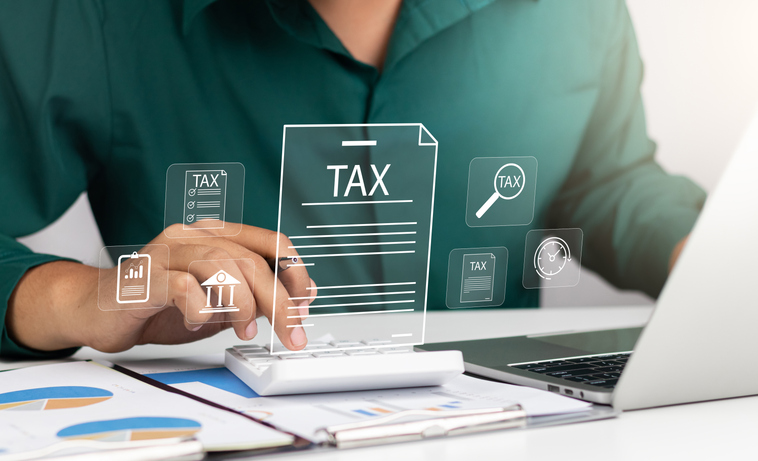On April 9, 2020, the Internal Revenue Service and Treasury issued additional guidance to specifically address the new net operating loss (NOL) rules included in Section 2303(b) of the CARES Act. Revenue Procedure 2020-24 clarifies the procedures related to filing refund claims resulting from the newly established five-year net operating loss carryback provisions under the Act.
Modification of NOL carryback rules
The Tax Cuts and Jobs Act (TCJA) made significant changes to the NOL rules that became effective in 2018. Specifically, NOLs arising in tax years beginning after 2017 could only reduce 80% of a taxpayer’s taxable income in carryback and carryforward years. The generally applicable two-year carryback period and 20-year carryforward period, as well as the longer carryback periods for special types of losses, were eliminated, effective for NOLs arising in tax years ending after 2017. NOLs arising in tax years ending after 2017, however, could be carried forward indefinitely. Farming losses and losses of casualty and property insurance companies continued to have a two-year carryback period.
New rules for NOLS arising in tax years beginning in 2018, 2019, and 2020
Under the recently passed Coronavirus Aid, Relief, and Economic Security (CARES) Act , any NOL arising in a tax year beginning after December 31, 2017 and before January 1, 2021 may be carried back five years unless the carryback period is waived. The carryforward period for NOLs remains unlimited. A technical correction clarifies that the unlimited carryforward period applies to tax years beginning after 2017 and not to tax years ending after 2017. The twenty year carryforward period for NOLs arising in tax years beginning before 2018 is unchanged, as a result of the CARES Act.
Thus, corporate NOLs arising in 2018, 2019 and 2020 can now be carried back as far as 2013, 2014, and 2015, respectively. This carryback right can be extremely valuable as the maximum corporate tax rate applicable to tax years ending before 2018 was 35%, much higher than the current 21% corporate tax rate.
Extension of time to waive five-year carryback for 2018 and 2019 NOLs
The five-year carryback period may be waived by making an election. For NOLs that arose in tax years beginning in 2018 or 2019, the time for making the waiver election is extended to the due date (including extensions) for filing the taxpayer’s return for the first tax year ending after the date of enactment of the new law, as added by the CARES Act. Normally, the election is required by the due date (including extensions) of the return for the tax year in which the NOL arose.
This temporary relief was necessary because the statutory deadline for making the waiver election has already expired for many taxpayers. The statutory deadline for making the election to waive the carryback period continues to apply to NOLs arising in a tax year that begins in 2020.
Mechanism for NOL carryback procedures
Preferred method
The quickest way to obtain a refund from an NOL carryback is to request a tentative refund by filing Form 1139, Corporation Application for Tentative Refund, or Form 1045, Individual Application for Tentative Refund. The IRS is required to make a limited examination of the claim and then issue a tentative refund (or credit the refund amount against an outstanding liability) by the later of 90 days after filing Form 1139 or 1045, or 90 days from the last day of the month of the due date of taxpayer’s return for the NOL year (including extensions).
The IRS generally requires that a Form 1139 or Form 1045 be filed within 12 months of the last day of the taxable year from which the NOL arises. For a calendar year 2018 NOL, the deadline was December 31, 2019. The IRS recently issued Notice 2020-26, which grants a six-month extension of time to facilitate the use of Forms 1139 and 1045 for 2018 NOLs. Consequently, taxpayers for whom the deadline has passed have an additional six months (June 30, 2020) to file Form 1139/1045. The ability to use Forms 1139 and 1045 will make the carryback claims easier for tax return preparers and will produce a much faster turnaround time for taxpayers who are in need of cash flow.
Alternative method
As an alternative, taxpayers may file for a refund by carrying back an NOL on Form 1120X, Amended U. S. Corporation Income Tax Return or on Form 1040X, Amended U.S. Individual Income Tax Return.
Obtaining a refund from an NOL carryback by filing Forms 1120X or 1040X for the carryback year could, however, take an extended amount of time. The IRS is not required to act on the refund request within 90 days. This method (as opposed to filing Forms 1139 and 1045) should only be used if the time requirements to file the Form 1139/1045 has expired.
NOL rules reinstated in tax years beginning after 2020
The current rules (pre-CARES Act) are reinstated for NOLs arising in tax years beginning after December 31, 2020. Thus, these NOLs may not be carried back and are deductible only to the extent of 80% of taxable income, as amended by the CARES Act.
Modification of limitation on losses for noncorporate taxpayers
Under the CARES Act, the recently instituted TCJA limitation on the deduction of excess business losses for noncorporate taxpayers will not apply for tax years beginning in 2018, 2019, and 2020. The deduction limitation will apply for tax years beginning after December 31, 2020. A number of technical amendments clarify the computation of the deduction.
Under the TCJA, effective for tax years 2018 and after, a noncorporate taxpayer was not permitted to claim a deduction for excess business losses for tax years beginning after December 31, 2017, and before January 1, 2026. Any disallowed excess business losses were to be treated as part of the taxpayer’s NOL carryover to the following tax year. The taxpayer would need to apply the at-risk rules and passive activity loss rules before application of the rules for excess business losses.
An excess business loss is the excess (if any) of the taxpayer’s aggregate deductions for the tax year from the taxpayer’s trades or businesses, determined without regard to whether or not such deductions are disallowed for such tax year under the excess business loss limitation; over the sum of:
- the taxpayer’s aggregate gross income or gain for the tax year from such trades or businesses; plus
- $250,000, adjusted annually for inflation ($255,000 in 2019, $259,000 in 2020) (200% of the $250,000 amount for a joint return: $510,000 in 2019 and $518,000 in 2020).
For a partnership and S corporation, the limit is applied at the partner or shareholder level. Each partner’s distributive share or each S corporation shareholder’s pro rata share of items of income, gain, deduction or loss of the partnership or S corporation is taken into account by the partner or shareholder in applying the excess business loss limit to the partner’s or shareholder’s tax year with or within which the partnership’s or S corporation’s tax year ends.
Deferral of excess business loss limitation until 2021
Under the CARES Act, the limitation on excess business losses is postponed for tax years beginning in 2018, 2019, and 2020. The limitation applies for tax years beginning after December 31, 2020, as amended by the CARES Act. The excess farm loss rules, which were replaced by the excess business loss rules for 2018 through 2025, will continue to not apply for tax years 2018 through 2020.
Any amount disallowed under the excess business loss limitation is treated as a NOL for the current tax year for purposes of determining any NOL carryover to subsequent tax year, as added by the CARES Act.
Because the limitation on excess business losses no longer applies to the 2018 tax year, taxpayers who were subject to the limitation for 2018 should file an amended return for the 2018 tax year and carry back any applicable loss to tax years 2013 and forward.
Refundable corporate AMT Credits
Under the CARES Act, corporations can recover refundable alternative minimum tax (AMT) credits in tax years beginning in 2018 and 2019. The new law accelerates the ability of corporations to recover refundable AMT credits, allowing corporations to claim a refund immediately and obtain additional cash flow during the COVID-19 emergency.
The corporate AMT was repealed by the TCJA for tax years beginning after December 31, 2017, and corporate AMT credits were made available as refundable credits over several years, ending in 2021. However, under the CARES Act, corporations can recover refundable these credits in tax years beginning in 2018 and 2019.
The refundable credit amount is equal to 50% (100% for tax years beginning in 2019) of the excess of the minimum tax credit for the tax year, over the amount allowable for the year against the regular tax liability. Corporations can elect to take the entire refundable credit amount in tax years beginning in 2018. In this case, the regular tax liability limitation does not apply. Form 1139 can be used to request these refunds.
Additional information
More news and updates about COVID-19 relief provisions can be found at our Coronavirus Resource Center and in the related posts below.
Please contact Don Johnston or Bob Grossman at 412-338-9300 if you have any questions or need additional assistance.
Related Posts:








